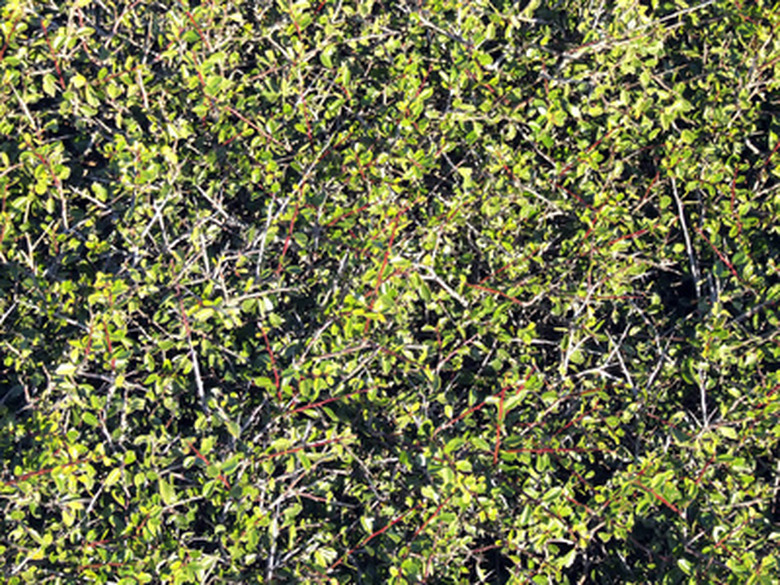Facts On The Pittosporum Shrub
If you are looking for a hearty, hardy shrub bush that can stand up to anything and needs next to no maintenance, then a Pittosporum shrub may be for you. These shrubs are very popular landscape bushes, but just because they are tough does not mean that they are completely unstoppable. Knowing what things make your Pittosporum shrub "happy" will help you keep your Pittosporum in top condition.
Characteristics
Pittosporum shrubs are round and compact. They have short stems, and branches radiate off those stems. Their leaves are oval, shiny and dark green, with the tops being darker than the undersides of the leaves. Pittosporum foliage is very dense. Pittosporum shrubs have flowers that smell similar to sweet orange flowers.
- If you are looking for a hearty, hardy shrub bush that can stand up to anything and needs next to no maintenance, then a Pittosporum shrub may be for you.
- Pittosporum shrubs have flowers that smell similar to sweet orange flowers.
Types
Pittosporum shrubs come in several popular varieties. The most common is Pittosporum tobira, also called Japanese Pittosporum and Pittosporum Mockorange. These shrubs also come in dwarf varieties and variegated varieties with lighter-colored leaves mixed in with the dark ones.
Climate and Location
Pittosporum shrubs are native to China and Japan, but they are used as decorative shrubs throughout the world. Pittosporum grows best in mild climates, and can grow nearly anywhere that is not constantly wet. The plant will also establish drought tolerance once it reaches maturity.
Growing Conditions
Pittosporum shrubs grow in both sunlight, shade and partial sun. In the sun, they remain short and squat. In the hade they may grow taller, but retain their round shape. Pittosporum shrubs grown in the shade can grow over four feet tall, but generally they stop short of this. These shrubs prefer loose, well-drained soil, but can grow in just about any conditions.
- Pittosporum shrubs come in several popular varieties.
- Pittosporum shrubs grown in the shade can grow over four feet tall, but generally they stop short of this.
Basic Care and Maintenance
Pittosporum are prone to aphids and a fungal scale, both of which tend to appear on the bottom of the leaves. These can be treated with specialized pesticides or you can use natural methods like ladybugs and sterilized pruning to rid your shrub of these problems. Under normal circumstances, you should not need to prune your Pittosporum, but some people do trim them to create boxy hedges or remove lower branches for a more rounded, "bonsai" look.
